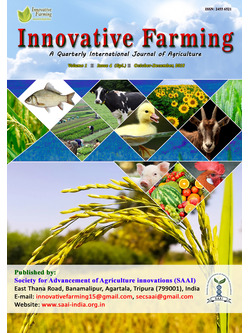
Genetic Erosion: A Threat to Biodiversity Depletion
Vijayata Singh*
Central Soil Salinity Research Institute, Karnal, Haryana-132001, INDIA
Jogendra Singh
Central Soil Salinity Research Institute, Karnal, Haryana-132001, INDIA
Awtar Singh
Central Soil Salinity Research Institute, Karnal, Haryana-132001, INDIA
Arijit Barman
Central Soil Salinity Research Institute, Karnal, Haryana-132001, INDIA
Sagar Vibhute
Central Soil Salinity Research Institute, Karnal, Haryana-132001, INDIA
R.S. Tolia
Central Soil Salinity Research Institute, Karnal, Haryana-132001, INDIA
DOI: NIL
Keywords: Genetic erosion, Biodiversity, Conservation
Abstract
Genetic erosion in crop biodiversity is the loss of genetic diversity, including the loss of individual genes, and the loss of particular combination of genes (or gene complexes) such as those manifested in locally adapted landraces of domesticated plants adapted to the natural environment in which they originated. The term genetic erosion is sometimes used in a narrow sense, such as for the loss of alleles or genes, as well as more broadly, referring to the loss of varieties or even species. The major driving forces behind genetic erosion in crops are: variety replacement, land cleaning, over exploitation of species, population pressure, environmental degradation, overgrazing, and changing agricultural systems. Genetic erosion can be prevented by four ways, viz. on farm or in-situ conservation, off farm or ex-situ conservation and complementary conservation.
Downloads
not found
Reference
Myers, N. (1994). Protected areas - protected from a greater what? Biodiversity and Conservation, 3, 411–418.
Marshall, D. R. (1977). The advantages and hazards of genetic homogeneity. Annals of the New York Academy of Sciences, 287, 1–20.
